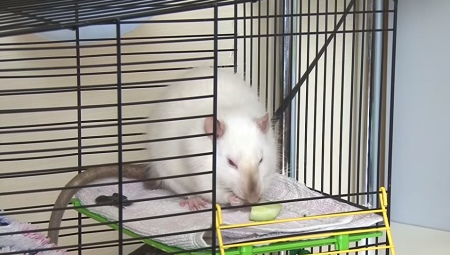Rats are small animals from the murine family, belonging to the genus of rodents. Characteristic features - a variety of fur colors: from gray-brown to white, the presence of a bare leathery tail, protruding front incisors. The body length of a medium-sized rat can vary between 10-30 cm, while the length of the tail is equal to the length of the body. The average weight range is from 80-150 grams.
The characteristic physiological features of the body structure of the rat provide it with a number of undeniable advantages: the ability to freely manipulate the forelimbs, a flexible spine, an elongated body shape.
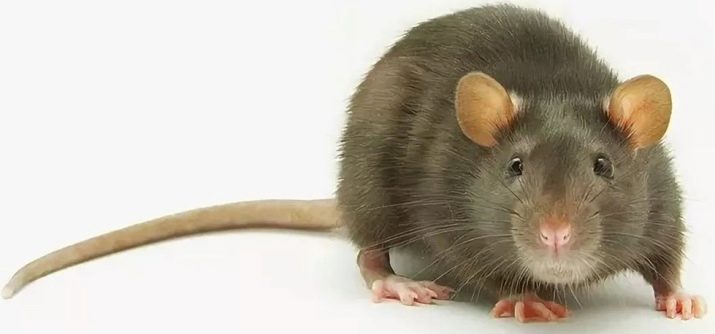
Thanks to these characteristics, rats can lead a full-fledged lifestyle in conditions critical for other mammals.
Modern animal breeding technologies have allowed breeding of a breed of rats adapted for living at home. In this regard, the development of the production of mini-houses for domesticated rodents. The zoo market presents a wide range of ready-made rat cages, however, independent construction will save money.

Design features
The home for decorative rats, assembled by yourself, must meet the basic criteria for maintenance. Among them are:
- gnawing resistance;
- lack of design features involving the penetration of a rodent out;
- minimal possibility of animal injuries.
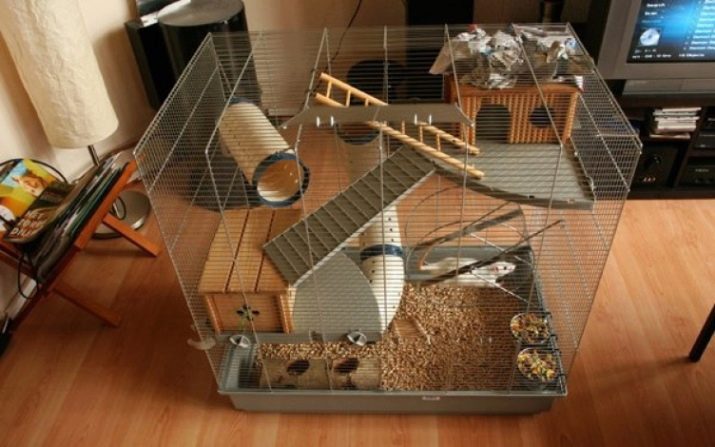
It should be borne in mind that the cell is a limiting factor for rats. Even an artificially bred animal will make constant escape attempts.
This is caused by an innate instinct, especially during mating. Uncontrolled penetration of the rat outside the cell is unacceptable. The rodent is capable of causing significant damage to the property of the owner in a short time. If the rat escapes during the “walk” period, it will taste everything that gets in the way in order to ensure the availability of material necessary for the formation of the nest.
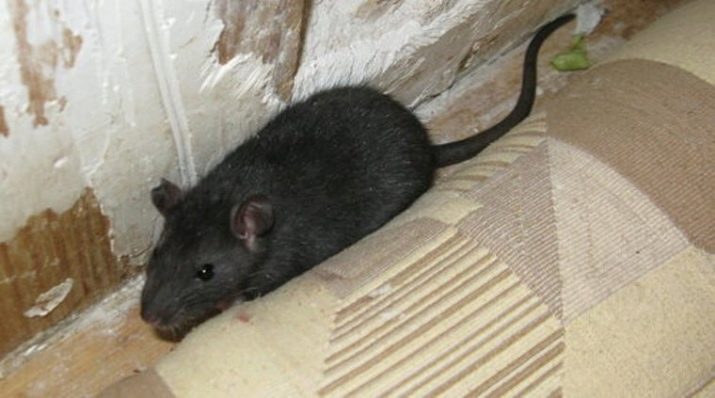
Dimensions
Dimensional parameters of the cell directly depend on the number of individuals that will live in it, as well as on their gender and age. Each individual must have at least 50 cubic centimeters of free space.
When calculating the size, it is the available volume that is taken into account, and not the area, since the rat can use the cell space in all directions. Attention is paid to the presence of additional devices that will be located inside the cell. The place they occupy should not be part of the space allotted for the free movement of the animal.
The optimal size of the cage, designed to live one individual, is one whose value assumes a minimum length of 50 cm on each side.
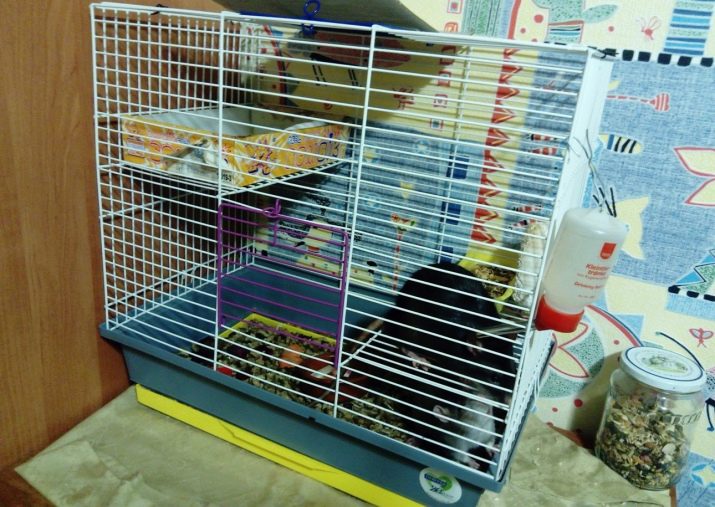
Forms
The characteristics of the shape of the cage for the rat are determined by the specific needs of each individual, as well as the parameters of the individual design. The main criterion that determines the shape of the cell is the design of its upper part - the roof. It can be triangular, oval, flat or combined.
The most common form of the cell is cubic, suggesting the presence of a flat roof and flat walls. This form allows you to use the available internal space as efficiently as possible.
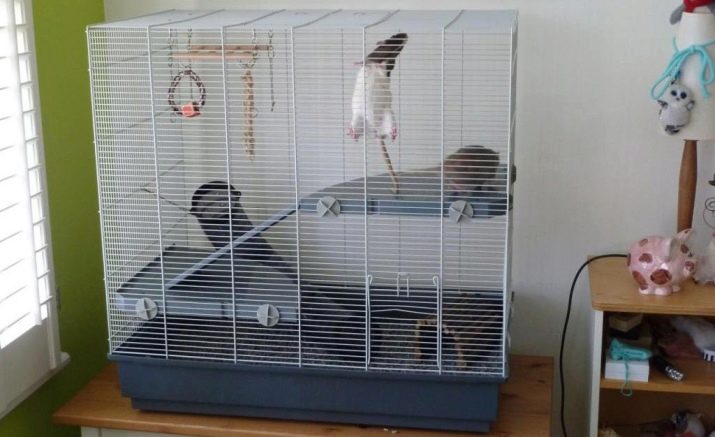
Materials
The design of the cage and the materials from which it is made must be resistant to rat attempts to gnaw them. This rule applies to frame elements, cell walls and internal accessories. All soft materials, such as plastic and wood used in the construction of the cage, must be adequately protected.
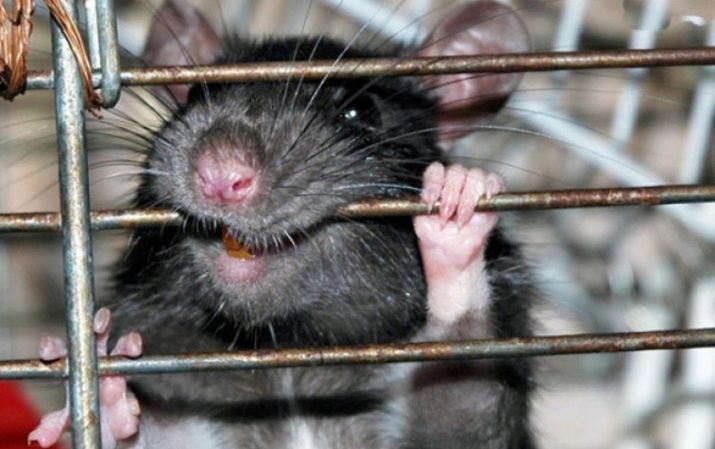
Advantages and disadvantages
Homemade cages for rats, like other handicrafts, have a number of advantages and disadvantages. Among the advantages are the following.
- Cost. Compared to store options, a makeshift cage will be much cheaper. This is due to the fact that when assembling it, you can use improvised materials available.
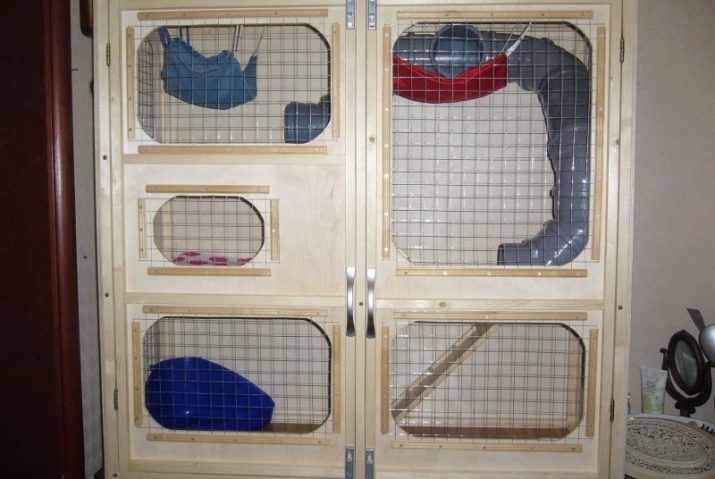
- A cage assembled at home can be adapted to the specific characteristics of an affordable interior. You can vary the dimensional parameters: width, height and shape.
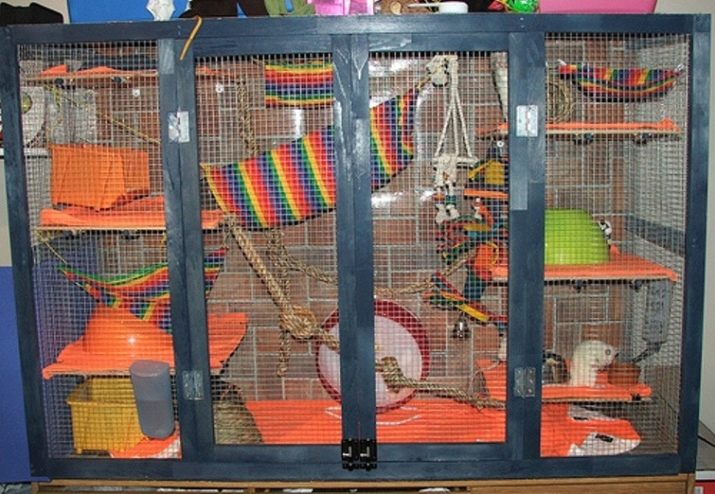
Among the minuses, it can be noted that self-assembly involves an understated level of aesthetics in appearance. This factor is due to the fact that in the manufacture of structural parts used tools with a low percentage of accuracy - unprofessional. Shop analogs are produced using automated machines, which ensures the best appearance of the product.

How to make and equip?
In order to make a cage for a rat at home, it is necessary to carry out preliminary calculations, including assessing the characteristics of the individuals that will live in it, to make detailed drawings. The drawing scheme should contain designations of the dimensions of certain parts of the structure, verified in advance.
In the process, it is important to strictly adhere to the scheme, this will complete the assembly with maximum accuracy and ensure the best final appearance of the product.
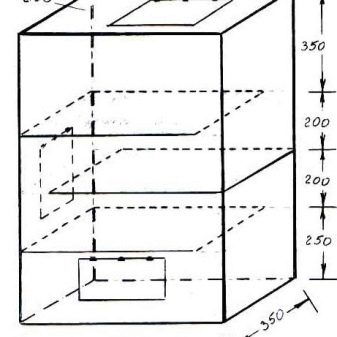
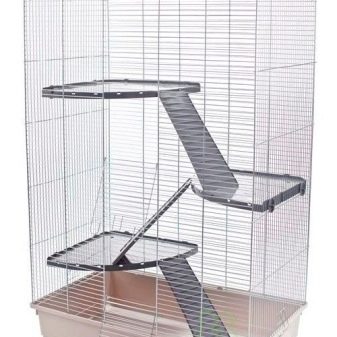
It is worth paying enough attention to the choice of materials from which the cell will be constructed. The optimal names of materials are stainless steel mesh or grate, natural wood, plastic. Metal elements must be selected taking into account the characteristics of each particular animal.
The mesh size or the distance between the grids should not provide the rodent with the opportunity to leave the home.
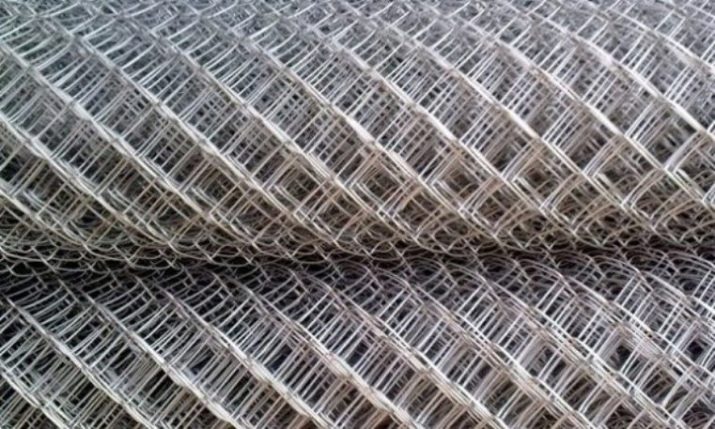
Wooden elements should be made of planed (polished) material. Cracks, roughness, splintering and other defects are excluded. The dimensions of wooden elements should not exceed the permissible maximum, since this parameter affects the weight of the entire structure.
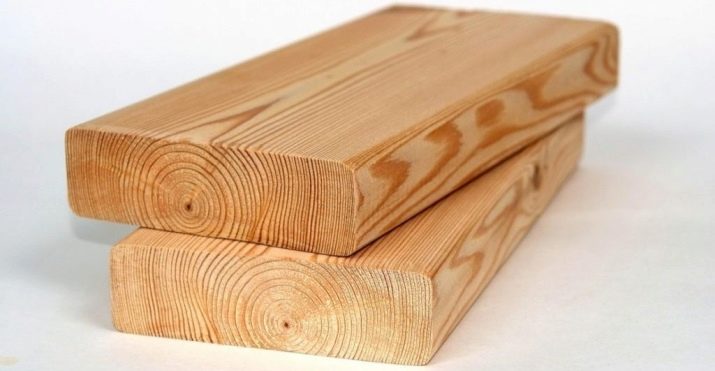
For the manufacture of the lower pallet and the floor of the cage, you can use plywood or fiberboard. The first option is effective in terms of resistance to loads, and the second provides low weight performance of the finished product.
No matter what material is used to equip the bottom of the cage, it must be treated with some kind of paintwork. This is necessary to prevent absorption of animal secretions into the wooden surface and subsequent fixation of the smell.
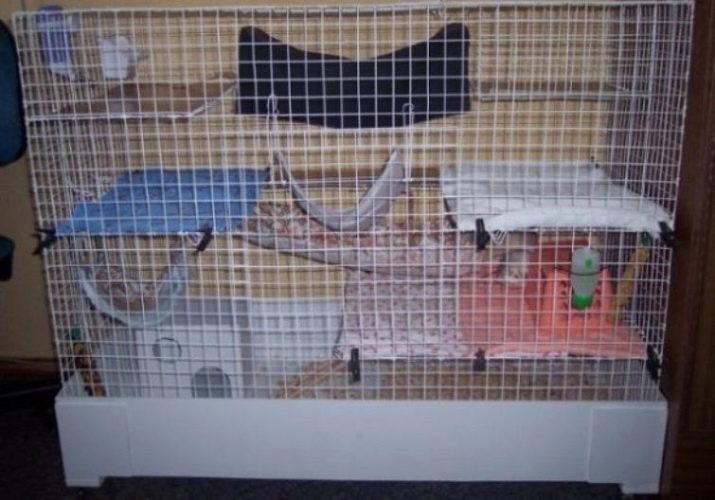
The assembly goes like this
It is necessary to cut blanks from wooden battens. The dimensions of the workpieces must correspond to those indicated on the drawing. Connect the obtained parts in such a way that you get a frame that is a cube or parallelepiped. All open space must be taken up with a grill or mesh. This manipulation involves attaching parts from the inside and protects the wooden structures from gnawing. A door is mounted in the front part of the cage.
It should be equipped with an appropriate locking mechanism, since physiological characteristics and the presence of natural instinct allow rats to open simple locks on their own.
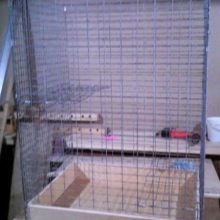
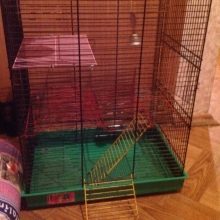
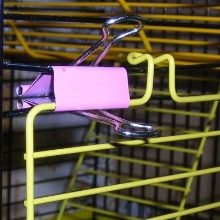
The dwelling for a decorative rat should be equipped with various devices designed to give it the opportunity to feel in a natural habitat. Such additions may include:
- swing;
- wheels
- labyrinths;
- tunnels
- hammocks;
- ropes.
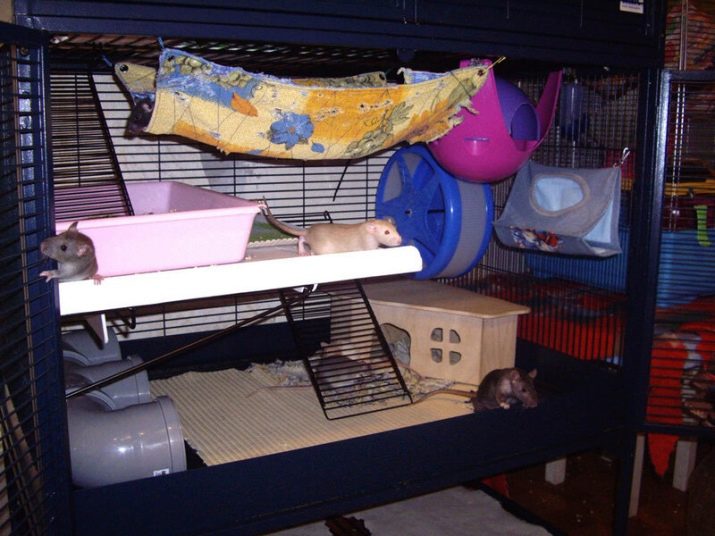
Interesting examples
This photo shows a factory version of the rat cage. According to a similar principle, you can arrange a home-made equivalent of a home for a rodent. This modification involves the presence of two floors. One of them has a mini-house imitating a hole. There is a tunnel providing access to a fabric hammock located above the burrow. Access to the tiers is provided through special ladders.
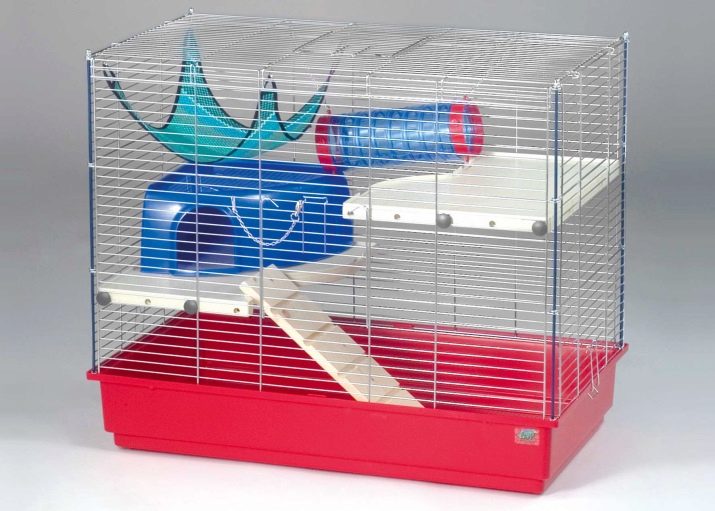
The design of the cage depicted in the photo involves the use of the maximum amount of wooden materials, and the amount of metal minimizes. In this model, there are 4 levels at which a rodent can live. In addition, each of the levels has one or another device that creates the effect of living an animal in a free environment. Such devices include a house with a round inlet, a suspended step ladder, a wooden tunnel and others.
An important element that complements the design of the cage is the running wheel. It allows the animal to receive sufficient physical activity, which positively affects its state of health.

You can learn how to make a cage for rats with your own hands without any difficulties in the next video.
